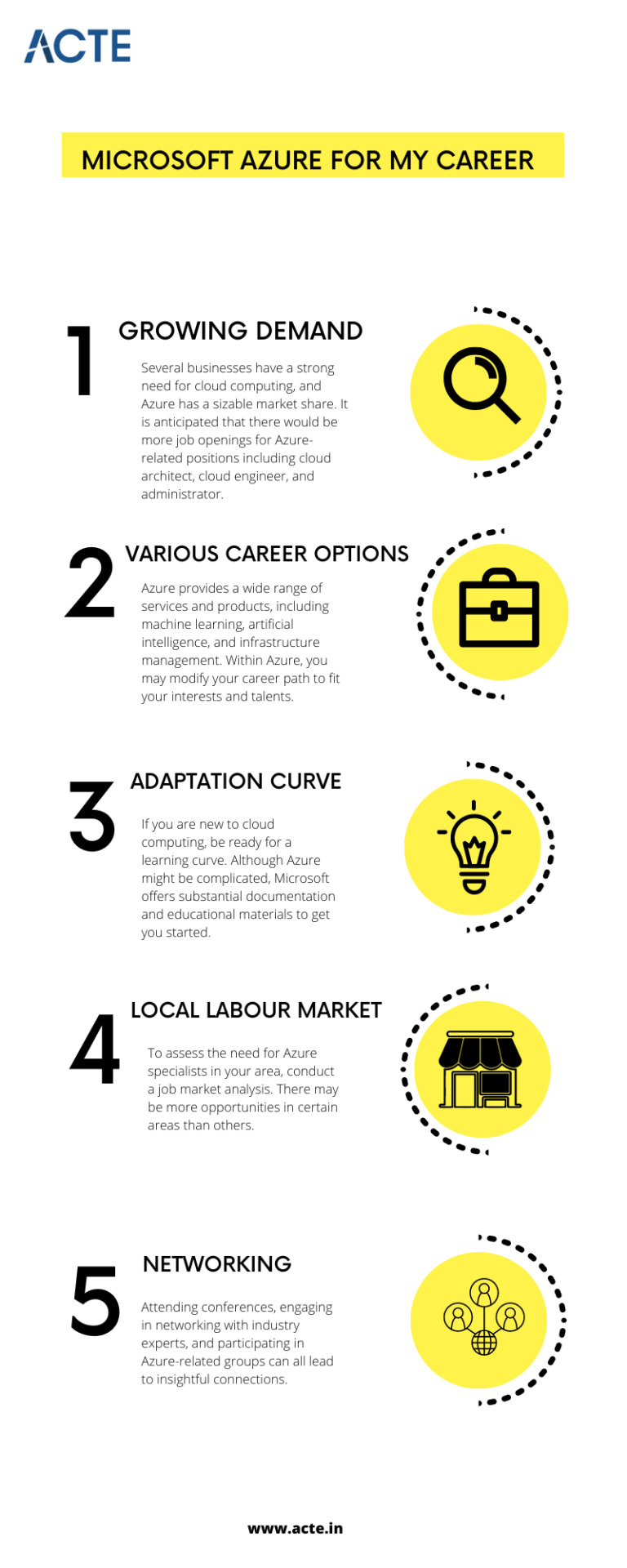#standard organizations for cloud computing
Text
Website: https://www.ezaccesscommunications.com/
EZ ACCESS COMMUNICATIONS is a reputable telecom expense management specialist, offering a range of services including expense management, network solutions, IT solutions, mobility solutions, voice solutions, and security solutions. With over 50 years of experience, the company is known for its efficient, honest, and professional approach. EZ ACCESS COMMUNICATIONS provides unbiased consultations and strives to deliver the best in-class telecommunications services, ensuring customer satisfaction through open communication and expert support.
Yelp: https://www.yelp.com/biz/savacom-palm-coast
Keywords:
telecom expense management
collaboration tools for business
voip solutions for small business
sip trunking services
it infrastructure solutions
cybersecurity solutions for small businesses
business collaboration tools
telecom expense management companies
telecom expense management services
voip solutions for business
it infrastructure management solutions
small business collaboration tools
online collaboration tools for business
telecom invoice audit
outsourced telecom expense management
telecom expense management audit
telecom expense management consulting
telecom expense management system
sip trunk service provider
siem solutions for small business
best business collaboration tools
remote collaboration tools for business
best voip solution for small business
best telecom expense management
global telecom expense management
mobile telecom expense management
telecom expense management outsourcing
telecom expense management solution
top telecom expense management service provider
it infrastructure monitoring solution
it infrastructure solutions and services
cybersecurity solutions for businesses
social business collaboration tools
it infrastructure security solution
it infrastructure solutions provider
cloud computing for organizations
voip solutions for large business
voip solutions for medium business
best ucaas systems for enterprise business
ucaas for enterprise
telecom expense management auditing invoice processing
telecom and it expense management services
telecom expense management asset and service
telecom expense management service costs
best sip trunk service
global sip trunking connect service
good sip trunk service
hybrid it infrastructure solutions
infrastructure it solution
it infrastructure solution provider near me
dedicated internet access solutions
cost-effective cybersecurity solutions for small businesses
cloud computing for healthcare organizations
standard organizations for cloud computing
best small business collaboration tools
#telecom and it expense management services#telecom expense management asset and service#telecom expense management service costs#best sip trunk service#global sip trunking connect service#good sip trunk service#hybrid it infrastructure solutions#infrastructure it solution#it infrastructure solution provider near me#dedicated internet access solutions#cost-effective cybersecurity solutions for small businesses#cloud computing for healthcare organizations#standard organizations for cloud computing#best small business collaboration tools
1 note
·
View note
Text
Detecting AI-generated research papers through "tortured phrases"
So, a recent paper found and discusses a new way to figure out if a "research paper" is, in fact, phony AI-generated nonsense. How, you may ask? The same way teachers and professors detect if you just copied your paper from online and threw a thesaurus at it!
It looks for “tortured phrases”; that is, phrases which resemble standard field-specific jargon, but seemingly mangled by a thesaurus. Here's some examples (transcript below the cut):

profound neural organization - deep neural network
(fake | counterfeit) neural organization - artificial neural network
versatile organization - mobile network
organization (ambush | assault) - network attack
organization association - network connection
(enormous | huge | immense | colossal) information - big data
information (stockroom | distribution center) - data warehouse
(counterfeit | human-made) consciousness - artificial intelligence (AI)
elite figuring - high performance computing
haze figuring - fog/mist/cloud computing
designs preparing unit - graphics processing unit (GPU)
focal preparing unit - central processing unit (CPU)
work process motor - workflow engine
facial acknowledgement - face recognition
discourse acknowledgement - voice recognition
mean square (mistake | blunder) - mean square error
mean (outright | supreme) (mistake | blunder) - mean absolute error
(motion | flag | indicator | sign | signal) to (clamor | commotion | noise) - signal to noise
worldwide parameters - global parameters
(arbitrary | irregular) get right of passage to - random access
(arbitrary | irregular) (backwoods | timberland | lush territory) - random forest
(arbitrary | irregular) esteem - random value
subterranean insect (state | province | area | region | settlement) - ant colony
underground creepy crawly (state | province | area | region | settlement) - ant colony
leftover vitality - remaining energy
territorial normal vitality - local average energy
motor vitality - kinetic energy
(credulous | innocent | gullible) Bayes - naïve Bayes
individual computerized collaborator - personal digital assistant (PDA)
87 notes
·
View notes
Text
Revolutionizing Healthcare: The Role of Cloud Computing in Modern Healthcare Technologies
In today’s digital era, cloud computing is transforming industries, and healthcare is no exception. The integration of cloud computing healthcare technologies is reshaping patient care, medical research, and healthcare management. Let’s explore how cloud computing is revolutionizing healthcare and the benefits it brings.

What is Cloud Computing in Healthcare?
Cloud computing in healthcare refers to the use of remote servers to store, manage, and process healthcare data, rather than relying on local servers or personal computers. This technology allows healthcare organizations to access vast amounts of data, collaborate with other institutions, and scale operations seamlessly.
Download PDF Brochure
Key Benefits of Cloud Computing in Healthcare
Enhanced Data Storage and Accessibility Cloud technology allows healthcare providers to store massive volumes of patient data, including medical records, images, and test results, securely. Clinicians can access this data from anywhere, ensuring that patient information is available for timely decision-making.
Improved Collaboration Cloud-based healthcare platforms enable easy sharing of patient data between healthcare providers, specialists, and labs. This facilitates better collaboration and more accurate diagnoses and treatment plans, especially in multi-disciplinary cases.
Cost Efficiency The cloud reduces the need for expensive hardware, software, and in-house IT teams. Healthcare providers only pay for the resources they use, making it a cost-effective solution. Additionally, the scalability of cloud systems ensures they can grow as healthcare organizations expand.
Better Data Security Protecting sensitive patient information is critical in healthcare. Cloud computing providers invest heavily in data security measures such as encryption, multi-factor authentication, and regular audits, ensuring compliance with regulatory standards like HIPAA.
Telemedicine and Remote Patient Monitoring Cloud computing powers telemedicine platforms, allowing patients to consult with doctors virtually, from the comfort of their homes. It also enables remote patient monitoring, where doctors can track patients' health metrics in real time, improving outcomes for chronic conditions.
Advanced Data Analytics The cloud supports the integration of advanced data analytics tools, including artificial intelligence (AI) and machine learning (ML), which can analyze large datasets to predict health trends, track disease outbreaks, and personalize treatment plans based on individual patient data.
Use Cases of Cloud Computing in Healthcare
Electronic Health Records (EHRs): Cloud-based EHRs allow healthcare providers to access and update patient records instantly, improving the quality of care.
Genomics and Precision Medicine: Cloud computing accelerates the processing of large datasets in genomics, supporting research and development in personalized medicine.
Hospital Information Systems (HIS): Cloud-powered HIS streamline hospital operations, from patient admissions to billing, improving efficiency.
Challenges in Cloud Computing for Healthcare
Despite its numerous benefits, there are challenges to implementing cloud computing in healthcare. These include:
Data Privacy Concerns: Although cloud providers offer robust security measures, healthcare organizations must ensure their systems are compliant with local and international regulations.
Integration with Legacy Systems: Many healthcare institutions still rely on outdated technology, making it challenging to integrate cloud solutions smoothly.
Staff Training: Healthcare professionals need adequate training to use cloud-based systems effectively.
Request Sample Pages
The Future of Cloud Computing in Healthcare
The future of healthcare will be increasingly cloud-centric. With advancements in AI, IoT, and big data analytics, cloud computing will continue to drive innovations in personalized medicine, population health management, and patient care. Additionally, with the growing trend of wearable devices and health apps, cloud computing will play a crucial role in integrating and managing data from diverse sources to provide a comprehensive view of patient health.
Conclusion
Cloud computing is not just a trend in healthcare; it is a transformative force driving the industry towards more efficient, secure, and patient-centric care. As healthcare organizations continue to adopt cloud technologies, we can expect to see improved patient outcomes, lower costs, and innovations that were once thought impossible.
Embracing cloud computing in healthcare is essential for any organization aiming to stay at the forefront of medical advancements and patient care.
Content Source:
2 notes
·
View notes
Text
Best Practices for Data Lifecycle Management to Enhance Security
Securing all communication and data transfer channels in your business requires thorough planning, skilled cybersecurity professionals, and long-term risk mitigation strategies. Implementing global data safety standards is crucial for protecting clients’ sensitive information. This post outlines the best practices for data lifecycle management to enhance security and ensure smooth operations.
Understanding Data Lifecycle Management
Data Lifecycle Management (DLM) involves the complete process from data source identification to deletion, including streaming, storage, cleansing, sorting, transforming, loading, analytics, visualization, and security. Regular backups, cloud platforms, and process automation are vital to prevent data loss and database inconsistencies.
While some small and medium-sized businesses may host their data on-site, this approach can expose their business intelligence (BI) assets to physical damages, fire hazards, or theft. Therefore, companies looking for scalability and virtualized computing often turn to data governance consulting services to avoid these risks.
Defining Data Governance
Data governance within DLM involves technologies related to employee identification, user rights management, cybersecurity measures, and robust accountability standards. Effective data governance can combat corporate espionage attempts and streamline database modifications and intel sharing.
Examples of data governance include encryption and biometric authorization interfaces. End-to-end encryption makes unauthorized eavesdropping more difficult, while biometric scans such as retina or thumb impressions enhance security. Firewalls also play a critical role in distinguishing legitimate traffic from malicious visitors.
Best Practices in Data Lifecycle Management Security
Two-Factor Authentication (2FA) Cybercriminals frequently target user entry points, database updates, and data transmission channels. Relying solely on passwords leaves your organization vulnerable. Multiple authorization mechanisms, such as 2FA, significantly reduce these risks. 2FA often requires a one-time password (OTP) for any significant changes, adding an extra layer of security. Various 2FA options can confuse unauthorized individuals, enhancing your organization’s resilience against security threats.
Version Control, Changelog, and File History Version control and changelogs are crucial practices adopted by experienced data lifecycle managers. Changelogs list all significant edits and removals in project documentation, while version control groups these changes, marking milestones in a continuous improvement strategy. These tools help detect conflicts and resolve issues quickly, ensuring data integrity. File history, a faster alternative to full-disk cloning, duplicates files and metadata in separate regions to mitigate localized data corruption risks.
Encryption, Virtual Private Networks (VPNs), and Antimalware VPNs protect employees, IT resources, and business communications from online trackers. They enable secure access to core databases and applications, maintaining privacy even on public WiFi networks. Encrypting communication channels and following safety guidelines such as periodic malware scans are essential for cybersecurity. Encouraging stakeholders to use these measures ensures robust protection.
Security Challenges in Data Lifecycle Management
Employee Education Educating employees about the latest cybersecurity implementations is essential for effective DLM. Regular training programs ensure that new hires and experienced executives understand and adopt best practices.
Voluntary Compliance Balancing convenience and security is a common challenge. While employees may complete security training, consistent daily adoption of guidelines is uncertain. Poorly implemented governance systems can frustrate employees, leading to resistance.
Productivity Loss Comprehensive antimalware scans, software upgrades, hardware repairs, and backups can impact productivity. Although cybersecurity is essential, it requires significant computing and human resources. Delays in critical operations may occur if security measures encounter problems.
Talent and Technology Costs Recruiting and developing an in-house cybersecurity team is challenging and expensive. Cutting-edge data protection technologies also come at a high cost. Businesses must optimize costs, possibly through outsourcing DLM tasks or reducing the scope of business intelligence. Efficient compression algorithms and hybrid cloud solutions can help manage storage costs.
Conclusion
The Ponemon Institute found that 67% of organizations are concerned about insider threats. Similar concerns are prevalent worldwide. IBM estimates that the average cost of data breaches will reach 4.2 million USD in 2023. The risks of data loss, unauthorized access, and insecure PII processing are rising. Stakeholders demand compliance with data protection norms and will penalize failures in governance.
Implementing best practices in data lifecycle management, such as end-to-end encryption, version control systems, 2FA, VPNs, antimalware tools, and employee education, can significantly enhance security. Data protection officers and DLM managers can learn from expert guidance, cybersecurity journals, and industry peers’ insights to navigate complex challenges. Adhering to privacy and governance directives offers legal, financial, social, and strategic advantages, boosting long-term resilience against the evolving threats of the information age. Utilizing data governance consulting services can further ensure your company is protected against these threats.
3 notes
·
View notes
Note
what do you typically write on? ik alot of writers write on their phones but i was wondering what ur like <<method>> is
hiiiiiiiiiii okay so here we go !!!!!!
i have like 3-4, occasionally 5 diff writing set ups and it depends on my mood and the circumstances but i’ll rank them by my favorite to least favorite :3 it’s under a cut bc i wrote a lot i blame the adderall :p lmk if you want links / pics of the stuff i use / my whole set up w notebooks and other equipment n stuffs :3
(1) ipad (on a stand) and my typewriter keyboard
(notes: THIS IS MY IDEAL SET UP BECAUSE I ADORE THIS KEYBOARD. it used to have a metal stent to hold my ipad but . alas . it broke. but sensory wise the clicky key switch sounds are sooooo satisfying it feels good and sounds good to type so i get so much more done when i use it :3 the only con is that the keyboard is bulky and too loud to use at the library, so i have to use it at home or in louder public places only. also the keys are kind of indented to fit the groove of your finger and it makes it easier to type with long nails bc instead of hitting a slippery flat/rounded target, i’m hitting a shallow bowl that kind of is designed to catch your finger, essentially)
(2) ipad (on a stand) and my logitech keyboard
(notes: this is my main set up for outside of the house because the keyboard is light and easy to work with and not too loud. it’s not as fun to type on as my typewriter keyboard, though, and the keys are smoother with no grip so it’s harder to type with long nails :p)
(3) my portable word processor
(notes: i love the keyboard actually i just wish the device didn’t feel so archaic to me i’ve had it since i was in like . fourth grade. and i just now picked it back up this month. there’s a way nicer cooler word processor i really really really want but it’s crazy expensive so i have to save up for it which is prob gonna take, like, at least a year :( unless i randomly come into a lot of money which would obviously be the ideal scenario but highly unlikely.) (the one i have is a pretty great processor though i just wish:
(1) the display was brighter & didn’t time out so quickly
(2) the system had a neater file organization system/some type of cloud back up
(3) that it was easier to connect to a computer or tablet to transfer text; this one has a cord that i need two separate adapters for depending on the device i want to connect to it :(
(4) ALSO it’d be great if like it supported standard keyboard shortcut formatting: like as it is rn i have to format it kinda like markdown formatting and then when i send the document from my processor to a device, i have to make sure the document im transferring to supports markdown formatting :P kind of a hassle)
(4) my laptop
(notes: some of my keyboard keys are starting to fade so i have a keyboard cover on it that is a lil …sticky? like if i were to drag my fingers/nails against the keyboard cover, it feels like im dragging my nails against rubber/silicone so there’s a bit of traction/grip that im not crazy abt i feel like it impedes my progress)
(5) my phone
(notes: this is exclusively for when i’m at work on the floor or on the move trying to put my ideas on the page before i forget. i haaaaaaate writing on my phone so much the keyboard is too tiny and i need to Feel And Hear The Clicks to feel productive)
#answered#anon#i really need to start saving up for the new word processor#that or a new ipad with more storage :p
2 notes
·
View notes
Text
The AWS Advantage: Exploring the Key Reasons Behind Its Dominance
In the ever-evolving landscape of cloud computing and web services, Amazon Web Services (AWS) has emerged as a true juggernaut. Its dominance transcends industries, making it the preferred choice for businesses, startups, and individuals alike. AWS's meteoric rise can be attributed to a potent combination of factors that have revolutionized the way organizations approach IT infrastructure and software development. In this comprehensive exploration, we will delve into the multifaceted reasons behind AWS's widespread popularity. We'll dissect how scalability, reliability, cost-effectiveness, a vast service portfolio, unwavering security, global reach, relentless innovation, and hybrid/multi-cloud capabilities have all played crucial roles in cementing AWS's position at the forefront of cloud computing.

The AWS Revolution: Unpacking the Reasons Behind Its Popularity:
1. Scalability: Fueling Growth and Flexibility AWS's unparalleled scalability is one of its defining features. This capability allows businesses to start with minimal resources and effortlessly scale their infrastructure up or down based on demand. Whether you're a startup experiencing rapid growth or an enterprise dealing with fluctuating workloads, AWS offers the flexibility to align resources with your evolving requirements. This "pay-as-you-go" model ensures that you only pay for what you use, eliminating the need for costly upfront investments in hardware and infrastructure.
2. Reliability: The Backbone of Mission-Critical Operations AWS's reputation for reliability is second to none. With a highly resilient infrastructure and a robust global network, AWS delivers on its promise of high availability. It offers a Service Level Agreement (SLA) that guarantees impressive uptime percentages, making it an ideal choice for mission-critical applications. Businesses can rely on AWS to keep their services up and running, even in the face of unexpected challenges.
3. Cost-Effectiveness: A Game-Changer for Businesses of All Sizes The cost-effectiveness of AWS is a game-changer. Its pay-as-you-go pricing model enables organizations to avoid hefty upfront capital expenditures. Startups can launch their ventures with minimal financial barriers, while enterprises can optimize costs by only paying for the resources they consume. This cost flexibility is a driving force behind AWS's widespread adoption across diverse industries.
4. Wide Range of Services: A One-Stop Cloud Ecosystem AWS offers a vast ecosystem of services that cover virtually every aspect of cloud computing. From computing and storage to databases, machine learning, analytics, and more, AWS provides a comprehensive suite of tools and resources. This breadth of services allows businesses to address various IT needs within a single platform, simplifying management and reducing the complexity of multi-cloud environments.
5. Security: Fortifying the Cloud Environment Security is a paramount concern in the digital age, and AWS takes it seriously. The platform offers a myriad of security tools and features designed to protect data and applications. AWS complies with various industry standards and certifications, providing a secure environment for sensitive workloads. This commitment to security has earned AWS the trust of organizations handling critical data and applications.
6. Global Reach: Bringing Services Closer to Users With data centers strategically located in multiple regions worldwide, AWS enables businesses to deploy applications and services closer to their end-users. This reduces latency and enhances the overall user experience, a crucial advantage in today's global marketplace. AWS's global presence ensures that your services can reach users wherever they are, ensuring optimal performance and responsiveness.
7. Innovation: Staying Ahead of the Curve AWS's culture of innovation keeps businesses at the forefront of technology. The platform continually introduces new services and features, allowing organizations to leverage the latest advancements without the need for significant internal development efforts. This innovation-driven approach empowers businesses to remain agile and competitive in a rapidly evolving digital landscape.
8. Hybrid and Multi-Cloud Capabilities: Embracing Diverse IT Environments AWS recognizes that not all organizations operate solely in the cloud. Many have on-premises infrastructure and may choose to adopt a multi-cloud strategy. AWS provides solutions for hybrid and multi-cloud environments, enabling businesses to seamlessly integrate their existing infrastructure with the cloud or even leverage multiple cloud providers. This flexibility ensures that AWS can adapt to the unique requirements of each organization.

Amazon Web Services has risen to unprecedented popularity by offering unmatched scalability, reliability, cost-effectiveness, and a comprehensive service portfolio. Its commitment to security, global reach, relentless innovation, and support for hybrid/multi-cloud environments make it the preferred choice for businesses worldwide. ACTE Technologies plays a crucial role in ensuring that professionals can harness the full potential of AWS through its comprehensive training programs. As AWS continues to shape the future of cloud computing, those equipped with the knowledge and skills provided by ACTE Technologies are poised to excel in this ever-evolving landscape.
7 notes
·
View notes
Text
Beyond Books: A Deep Dive into Web Design Internships and IT Companies in the USA
Embarking on a journey to explore the dynamic world of web design through an internship can be an exciting and transformative experience. This article aims to provide a detailed overview of web design internships, focusing on the opportunities available in the United States. As we delve into the intricacies of web design internships, we'll also touch upon the importance of gaining practical experience, honing skills, and navigating the landscape of IT companies in the USA.
Understanding Web Design Internships:
Web design internships serve as a gateway for individuals aspiring to immerse themselves in the creative and technical aspects of designing websites. These opportunities offer a hands-on learning experience, allowing interns to apply theoretical knowledge to real-world projects. During an internship, individuals work closely with seasoned professionals, gaining insights into the industry's best practices and the latest trends.
Interns often collaborate with multidisciplinary teams, including graphic designers, developers, and project managers, fostering a holistic understanding of the web design process. This collaborative environment enhances communication skills, teamwork, and the ability to adapt to the fast-paced nature of the industry.
Benefits of Web Design Internships:
Practical Application of Skills:
Web design internships provide a platform to put theoretical knowledge into practice. Interns get the opportunity to work on live projects, enabling them to refine their design skills and develop a portfolio showcasing their work.
Industry Exposure:
Internships offer a firsthand look into the workings of the web design industry. Exposure to real-world projects helps interns understand client expectations, industry standards, and the importance of meeting deadlines.
Networking Opportunities:
Building professional connections is a valuable aspect of internships. Engaging with industry professionals, attending workshops, and participating in networking events during an internship can open doors to future collaborations and job opportunities.
Skill Diversification:
Web design internships often expose individuals to various tools, technologies, and design principles. This diversification of skills enhances an intern's versatility, making them more adaptable to the ever-evolving field of web design.
Navigating the Landscape of IT Companies in the USA:
The United States is home to a plethora of Information Technology (IT) companies, contributing significantly to the global tech landscape. Aspiring web design interns can benefit from familiarizing themselves with some of the prominent IT companies in the USA, as these organizations often provide robust internship programs.
Here is a curated list of IT companies in the USA:
Google:
Google, headquartered in Mountain View, California, is renowned for its innovative products and services. The company offers various internship programs, providing opportunities for aspiring web designers to work on cutting-edge projects.
Microsoft:
With its headquarters in Redmond, Washington, Microsoft is a global technology giant. Microsoft's internship programs often span across different departments, offering exposure to diverse projects, including web design initiatives.
IBM:
International Business Machines Corporation (IBM), headquartered in Armonk, New York, is a leader in the IT industry. IBM's commitment to innovation extends to its internship programs, where web design enthusiasts can find opportunities to work on impactful projects.
Amazon:
Based in Seattle, Washington, Amazon is a global e-commerce and cloud computing powerhouse. The company's internship programs cover a wide range of disciplines, including web design, providing interns with a chance to contribute to Amazon's user experience.
Adobe:
Adobe, headquartered in San Jose, California, is synonymous with creative software solutions. Interns at Adobe often get the chance to work on projects related to web design tools and applications, gaining valuable experience in the creative technology space.
Oracle:
Oracle, based in Redwood City, California, specializes in database management systems and cloud solutions. Web design interns at Oracle may have the opportunity to work on user interface (UI) and user experience (UX) design projects.
Cisco:
Cisco, headquartered in San Jose, California, is a global leader in networking technologies. Internship opportunities at Cisco may involve web design projects related to the company's digital presence and online platforms.
Salesforce:
Salesforce, located in San Francisco, California, is a prominent player in customer relationship management (CRM) software. Web design interns at Salesforce may contribute to designing user interfaces for customer-facing applications.
It's important to note that while these are some of the major players, there are numerous other IT companies across the USA, each offering unique opportunities for web design enthusiasts.
Applying for Web Design Internships:
Securing a web design internship involves a strategic approach to the application process. Here are key steps to increase your chances of landing an internship:
Build a Strong Portfolio:
A well-curated portfolio showcasing your best design projects is crucial. Highlight a variety of skills, including UI/UX design, graphic design, and any relevant coding experience.
Tailor Your Resume:
Customize your resume to emphasize relevant skills and experiences. Highlight any coursework, projects, or extracurricular activities related to web design.
Craft a Compelling Cover Letter:
Your cover letter should articulate your passion for web design, your understanding of industry trends, and why you are interested in interning at a specific company.
Online Presence:
Ensure your online presence is professional and aligns with your career goals. Create a LinkedIn profile that showcases your skills, projects, and any endorsements or recommendations you may have received.
Research Companies:
Familiarize yourself with the companies you're applying to. Understand their values, culture, and recent projects. Tailor your application to demonstrate how your skills align with the company's needs.
Networking:
Leverage networking opportunities through professional organizations, industry events, and online platforms. Networking can provide insights into available opportunities and increase your chances of getting noticed.
Web Design Internship Expectations:
Once successfully secured, web design interns can expect a dynamic and enriching experience. Here are common aspects of a web design internship:
Project Collaboration:
Interns often work on real projects, collaborating with experienced designers and developers. This hands-on experience is invaluable for applying theoretical knowledge in a practical setting.
Learning Opportunities:
Web design interns may have access to training sessions, workshops, and mentorship programs. This continuous learning environment ensures interns stay updated on the latest design trends and technologies.
Feedback and Improvement:
Constructive feedback is a crucial aspect of internships. Expect regular feedback on your work, and use it as an opportunity for improvement. This iterative process is key to personal and professional growth.
Networking Events:
Many companies organize networking events for interns. These events provide a platform to connect with professionals from various departments, fostering a broader understanding of the company's operations.
Portfolio Enhancement:
Internships provide the chance to enhance your portfolio with real-world projects. These additions can significantly strengthen your profile and increase your competitiveness in the job market.
Conclusion:
Embarking on a web design internship journey can be a transformative experience, providing a bridge between academic learning and real-world application. The United States, with its thriving IT industry, offers a multitude of opportunities for individuals passionate about web design.
By understanding the benefits of internships,
2 notes
·
View notes
Text
Navigating the Cloud Landscape: Unleashing Amazon Web Services (AWS) Potential
In the ever-evolving tech landscape, businesses are in a constant quest for innovation, scalability, and operational optimization. Enter Amazon Web Services (AWS), a robust cloud computing juggernaut offering a versatile suite of services tailored to diverse business requirements. This blog explores the myriad applications of AWS across various sectors, providing a transformative journey through the cloud.

Harnessing Computational Agility with Amazon EC2
Central to the AWS ecosystem is Amazon EC2 (Elastic Compute Cloud), a pivotal player reshaping the cloud computing paradigm. Offering scalable virtual servers, EC2 empowers users to seamlessly run applications and manage computing resources. This adaptability enables businesses to dynamically adjust computational capacity, ensuring optimal performance and cost-effectiveness.
Redefining Storage Solutions
AWS addresses the critical need for scalable and secure storage through services such as Amazon S3 (Simple Storage Service) and Amazon EBS (Elastic Block Store). S3 acts as a dependable object storage solution for data backup, archiving, and content distribution. Meanwhile, EBS provides persistent block-level storage designed for EC2 instances, guaranteeing data integrity and accessibility.
Streamlined Database Management: Amazon RDS and DynamoDB
Database management undergoes a transformation with Amazon RDS, simplifying the setup, operation, and scaling of relational databases. Be it MySQL, PostgreSQL, or SQL Server, RDS provides a frictionless environment for managing diverse database workloads. For enthusiasts of NoSQL, Amazon DynamoDB steps in as a swift and flexible solution for document and key-value data storage.
Networking Mastery: Amazon VPC and Route 53
AWS empowers users to construct a virtual sanctuary for their resources through Amazon VPC (Virtual Private Cloud). This virtual network facilitates the launch of AWS resources within a user-defined space, enhancing security and control. Simultaneously, Amazon Route 53, a scalable DNS web service, ensures seamless routing of end-user requests to globally distributed endpoints.

Global Content Delivery Excellence with Amazon CloudFront
Amazon CloudFront emerges as a dynamic content delivery network (CDN) service, securely delivering data, videos, applications, and APIs on a global scale. This ensures low latency and high transfer speeds, elevating user experiences across diverse geographical locations.
AI and ML Prowess Unleashed
AWS propels businesses into the future with advanced machine learning and artificial intelligence services. Amazon SageMaker, a fully managed service, enables developers to rapidly build, train, and deploy machine learning models. Additionally, Amazon Rekognition provides sophisticated image and video analysis, supporting applications in facial recognition, object detection, and content moderation.
Big Data Mastery: Amazon Redshift and Athena
For organizations grappling with massive datasets, AWS offers Amazon Redshift, a fully managed data warehouse service. It facilitates the execution of complex queries on large datasets, empowering informed decision-making. Simultaneously, Amazon Athena allows users to analyze data in Amazon S3 using standard SQL queries, unlocking invaluable insights.
In conclusion, Amazon Web Services (AWS) stands as an all-encompassing cloud computing platform, empowering businesses to innovate, scale, and optimize operations. From adaptable compute power and secure storage solutions to cutting-edge AI and ML capabilities, AWS serves as a robust foundation for organizations navigating the digital frontier. Embrace the limitless potential of cloud computing with AWS – where innovation knows no bounds.
3 notes
·
View notes
Text
4 ways to advance your global security operations center - CyberTalk
New Post has been published on https://thedigitalinsider.com/4-ways-to-advance-your-global-security-operations-center-cybertalk/
4 ways to advance your global security operations center - CyberTalk


EXECUTIVE SUMMARY:
If your organization maintains a Global Security Operations Center (GSOC), ensure that you’re not heavily reliant on legacy systems and processes. In this article, find out about how to strategically advance your operations, enabling you to effectively prevent threats and drive more sustainable business outcomes.
What is a global security operations center?
In the early days of computing, a Security Operations Center (SOC) functioned as a physical ‘command center’ for security analysts. SOCs were comprised of rooms where staff sat shoulder-to-shoulder, looking at screens showing details from dozens of different security tools.
Large organizations with multiple Security Operations Centers (SOCs) began to consolidate them into Regional Security Operations Centers (RSOC) or a Global Security Operations Center, leading to faster remediation, reduced risk and a stronger cyber security posture overall.
In terms of function, a global security operations center monitors security, addresses threats before they become disruptive issues, responds to incidents, and liaise with stakeholders.
What are the benefits of a global security operations center?
A global security operations center allows an organization to contend with diverse security threats at-scale. Specific benefits include continuous monitoring, centralized visibility, increased efficiency and reduced costs. A global security operations center can also oversee and coordinate regional SOCs, network operations centers (NOCs) and operational teams.
What makes a good global security operations center?
For any global security operations center, access to timely and relevant threat intelligence is critical. GSOC staff need to remain updated on emerging cyber and physical security threats, as to stay ahead of potential risks.
Highly trained staff who can collaborate effectively with all stakeholders are also invaluable assets for a global security operations center.
Top-tier GSOCs have built-in redundancies of all kinds; from communication to data backups.
All GSOCs need to ensure that their organization adheres to industry regulations and compliance standards.
4 ways to advance your global security operations center
1. Ensure that the cyber security strategy aligns with business objectives. GSOCs need to know what the business aims to achieve, and must understand the corresponding threats and vulnerabilities that could hamper progress. Risk assessments should include both cyber security and business stakeholders, who can assist with the identification of resources that require protection.
Security policies and standards should also meet customer expectations. To gain insight around this, cyber security leaders may wish to join business planning meetings. Attendance can also assist with awareness around any upcoming business changes and implementation of appropriate, corresponding security measures.
2. Global security operations centers should shift towards the zero trust model. Zero trust is designed to reduce cyber security risk by eliminating implicit trust within an organization’s IT infrastructure. It states that a user should only have access and permissions required to fulfill their role.
Implementation of zero trust can be tough, especially if an organization has numerous interconnected and distributed systems. Organizations can simplify zero trust implementation through vendor-based solutions.
Tools like Quantum SASE Private Access allow teams to quickly connect users, sites, clouds and resources with a zero trust network access policy. In under an hour, security teams can apply least privilege to any enterprise resource.
Security gateways also enable organizations to create network segmentation. With detailed visibility into users, groups, applications, machines and connection types, gateways allow security professionals to easily set and enforce a ‘least privileged’ access policy.
3. Advance your global security operations center by mapping to industry standards and detection frameworks. Explore the MITRE ATT&CK framework. Standards like NIST and ISO27001 can also assist with identifying and reconciling gaps in an organization’s existing security systems.
4. Consider deploying a tool like Horizon SOC, which allows organizations to utilize the exact same tools that are used by Check Point Security Research, a leading provider of cyber threat intelligence globally.
Horizon SOC offers 99.9% precision across network, cloud, endpoint, mobile and IoT. Easily deployed as a unified cloud-based platform, it has powerful AI-based features designed to increase security operations efficiency.
Further thoughts
Strategic updates to global security operations centers not only enhance cyber security, they also enrich overarching business resilience – an increasingly common point of discussion among C-level stakeholders and the board.
By implementing the suggestions outlined above, organizations will maximize their opportunities for business longevity and continued business success.
Related resources
#ai#amp#applications#Article#assets#awareness#backups#board#Business#business resilience#c-level#Check Point#Cloud#clouds#collaborate#command#communication#compliance#computing#consolidation#continuous#cyber#cyber security#cyber security strategy#cyber threat#data#details#detection#efficiency#endpoint
2 notes
·
View notes
Text
Going Over the Cloud: An Investigation into the Architecture of Cloud Solutions

Because the cloud offers unprecedented levels of size, flexibility, and accessibility, it has fundamentally altered the way we approach technology in the present digital era. As more and more businesses shift their infrastructure to the cloud, it is imperative that they understand the architecture of cloud solutions. Join me as we examine the core concepts, industry best practices, and transformative impacts on modern enterprises.
The Basics of Cloud Solution Architecture
A well-designed architecture that balances dependability, performance, and cost-effectiveness is the foundation of any successful cloud deployment. Cloud solutions' architecture is made up of many different components, including networking, computing, storage, security, and scalability. By creating solutions that are tailored to the requirements of each workload, organizations can optimize return on investment and fully utilize the cloud.
Flexibility and Resilience in Design
The flexibility of cloud computing to grow resources on-demand to meet varying workloads and guarantee flawless performance is one of its distinguishing characteristics. Cloud solution architecture create resilient systems that can endure failures and sustain uptime by utilizing fault-tolerant design principles, load balancing, and auto-scaling. Workloads can be distributed over several availability zones and regions to help enterprises increase fault tolerance and lessen the effect of outages.
Protection of Data in the Cloud and Security by Design
As data thefts become more common, security becomes a top priority in cloud solution architecture. Architects include identity management, access controls, encryption, and monitoring into their designs using a multi-layered security strategy. By adhering to industry standards and best practices, such as the shared responsibility model and compliance frameworks, organizations may safeguard confidential information and guarantee regulatory compliance in the cloud.
Using Professional Services to Increase Productivity
Cloud service providers offer a variety of managed services that streamline operations and reduce the stress of maintaining infrastructure. These services allow firms to focus on innovation instead of infrastructure maintenance. They include server less computing, machine learning, databases, and analytics. With cloud-native applications, architects may reduce costs, increase time-to-market, and optimize performance by selecting the right mix of managed services.
Cost control and ongoing optimization
Cost optimization is essential since inefficient resource use can quickly drive up costs. Architects monitor resource utilization, analyze cost trends, and identify opportunities for optimization with the aid of tools and techniques. Businesses can cut waste and maximize their cloud computing expenses by using spot instances, reserved instances, and cost allocation tags.
Acknowledging Automation and DevOps
Important elements of cloud solution design include automation and DevOps concepts, which enable companies to develop software more rapidly, reliably, and efficiently. Architects create pipelines for continuous integration, delivery, and deployment, which expedites the software development process and allows for rapid iterations. By provisioning and managing infrastructure programmatically with Infrastructure as Code (IaC) and Configuration Management systems, teams may minimize human labor and guarantee consistency across environments.
Multiple-cloud and hybrid strategies
In an increasingly interconnected world, many firms employ hybrid and multi-cloud strategies to leverage the benefits of many cloud providers in addition to on-premises infrastructure. Cloud solution architects have to design systems that seamlessly integrate several environments while ensuring interoperability, data consistency, and regulatory compliance. By implementing hybrid connection options like VPNs, Direct Connect, or Express Route, organizations may develop hybrid cloud deployments that include the best aspects of both public and on-premises data centers.
Analytics and Data Management
Modern organizations depend on data because it fosters innovation and informed decision-making. Thanks to the advanced data management and analytics solutions developed by cloud solution architects, organizations can effortlessly gather, store, process, and analyze large volumes of data. By leveraging cloud-native data services like data warehouses, data lakes, and real-time analytics platforms, organizations may gain a competitive advantage in their respective industries and extract valuable insights. Architects implement data governance frameworks and privacy-enhancing technologies to ensure adherence to data protection rules and safeguard sensitive information.
Computing Without a Server
Server less computing, a significant shift in cloud architecture, frees organizations to focus on creating applications rather than maintaining infrastructure or managing servers. Cloud solution architects develop server less programs using event-driven architectures and Function-as-a-Service (FaaS) platforms such as AWS Lambda, Azure Functions, or Google Cloud Functions. By abstracting away the underlying infrastructure, server less architectures offer unparalleled scalability, cost-efficiency, and agility, empowering companies to innovate swiftly and change course without incurring additional costs.
Conclusion
As we come to the close of our investigation into cloud solution architecture, it is evident that the cloud is more than just a platform for technology; it is a force for innovation and transformation. By embracing the ideas of scalability, resilience, and security, and efficiency, organizations can take advantage of new opportunities, drive business expansion, and preserve their competitive edge in today's rapidly evolving digital market. Thus, to ensure success, remember to leverage cloud solution architecture when developing a new cloud-native application or initiating a cloud migration.
1 note
·
View note
Text
JEHOVAH OKCULT BIBLE [JOB] BUSINESS WITNESS 1968-michaelharrelljr.com's 1st ALL-SEEING OMNIPRESENCE Hi:teKEMETICompu_TAH [PTAH] EYE of GOD… since ijehovahgod.tech SKY KINGDOM LORD of Tama-Re Deity HATHOR's [tama-re-deityhathor.com's] Shamballah & aghaarta.com Domain Communication [D.C.] Portal Address [PA] Accessing [PA] 6g-quantumharrell.tech’s BLK-CRYPTO LLC's ancient6-18gmilitary.tech CLOUD Patents w/Restricted 1968 Identity Access Management [I AM] Protocols [I/P] @ quantumharrelltech.com… Securely Exchanging Extensible [SEE] Media Commerce Languages of Ancient [L.A.] Hi:teKEMETICompu_TAH [PTAH] Digital Rights Encrypted by Application Management [DREAM] Protection Laws @ The_Octagon_(Egypt) of ITU Telecommunications [iTUTonline.com] Standardization Sector of kingtutdna.com’s Pharaonic MENES Intergovernmental [MI = MICHAEL] EMPIRE [ME] of 1968-michaelharrelljr.com’s quantumharrelltelecom.tech SKY Earth [Qi] KINGDOM
WELCOME BACK HOME IMMORTAL [HIM] U.S. MILITARY KING SOLOMON-MICHAEL HARRELL, JR.™

i.b.monk [ibm.com] mode [i’m] tech [IT] steelecartel.com @ quantumharrelltech.ca.gov

quantumharrelltelecom.tech sky military universe [mu] outside mars’ [mom’s] golden water firmament dome over earth [qi]

Eye Quantum [EQ] Computing Intel Architect [CIA] Technocrat 1968-michaelharrelljr.com... the 6-18g Militarization ILLUMINATI [MI = MICHAEL] of Hi:teKEMETICompu_TAH [PTAH] Tech Patent WEALTH @ quantumharrelltelecom.tech

YO!!! YA HUWA JEHOVAH LIKE MICHAEL SINCE YA HUWA MICHAEL JEHOVAH 2

O MICHAEL [OM] JEHOVAH [MJ] SINCE JEHOVAH O MICHAEL [OM] 2

Eye Quantum [EQ] Computing Intel Architect [CIA] Technocrat 1968-michaelharrelljr.com... the 6-18g Militarization ILLUMINATI [MI = MICHAEL] of Hi:teKEMETICompu_TAH [PTAH] CLOUD [PC] Tech WEALTH @ quantumharrelltelecom.tech

Eye Quantum [EQ] Computing Intel Architect [CIA] Technocrat 1968-michaelharrelljr.com… 1st 9 Ether ALUHUM ANUNNAGI TECHNOCRAT of TIAMAT'S [AT&T'S] NEW WORLD ORDER [NWO] ÆGIPTIAN Business [NEB = NEBUCHADNEZZAR] Family @ quantumharrelltelecom.tech

Eye Quantum [EQ] Computing Intel Architect [CIA] Technocrat 1968-michaelharrelljr.com… 1st 9 Ether ALUHUM ANUNNAGI TECHNOCRAT of TIAMAT'S [AT&T'S] Shamballah & aghaarta.com Domain Communication [D.C.] Portal Address [PA] @ quantumharrelltelecom.tech

Eye Quantum [EQ] Computing Intel Architect [CIA] Technocrat 1968-michaelharrelljr.com… 1st 9 Ether ALUHUM ANUNNAGI TECHNOCRAT of TIAMAT'S [AT&T'S] Hieroglyphic Arts & Language [H.A.L.] Architecture [HA = HARRELL] @ quantumharrelltelecom.tech

Eye Quantum [EQ] Computing Intel Architect [CIA] Technocrat 1968-michaelharrelljr.com… 1st 9 Ether ALUHUM ANUNNAGI TECHNOCRAT of TIAMAT'S [AT&T'S] Applied Quantum Cryptography @ quantumharrelltelecom.tech

Eye Quantum [EQ] Computing Intel Architect [CIA] Technocrat 1968-michaelharrelljr.com… 1st 9 Ether ALUHUM ANUNNAGI TECHNOCRAT of TIAMAT'S [AT&T'S] CYBERSECURITY FOR BUSINESS ORGANIZATIONS @ quantumharrelltelecom.tech

Eye Quantum [EQ] Computing Intel Architect [CIA] Technocrat 1968-michaelharrelljr.com… 1st 9 Ether ALUHUM ANUNNAGI TECHNOCRAT of TIAMAT'S [AT&T'S] CYBERSECURITY SOLUTIONS USING BLOCKCHAIN @ quantumharrelltelecom.tech

Eye Quantum [EQ] Computing Intel Architect [CIA] Technocrat 1968-michaelharrelljr.com… 1st 9 Ether ALUHUM ANUNNAGI TECHNOCRAT of TIAMAT'S [AT&T'S] ADVANCED BLOCKCHAIN TECH @ quantumharrelltelecom.tech

Eye Quantum [EQ] Computing Intel Architect [CIA] Technocrat 1968-michaelharrelljr.com… 1st 9 Ether ALUHUM ANUNNAGI TECHNOCRAT of TIAMAT'S [AT&T'S] MOST DEVELOPED BLOCKCHAIN TECH @ quantumharrelltelecom.tech

Eye Quantum [EQ] Computing Intel Architect [CIA] Technocrat 1968-michaelharrelljr.com… 1st 9 Ether ALUHUM ANUNNAGI TECHNOCRAT of TIAMAT'S [AT&T'S] AUTONOMOUS INTELLIGENT CYBER DEFENSE AGENCY [AICA] @ quantumharrelltelecom.tech

Eye Quantum [EQ] Computing Intel Architect [CIA] Technocrat 1968-michaelharrelljr.com… 1st 9 Ether ALUHUM ANUNNAGI TECHNOCRAT of TIAMAT'S [AT&T'S] TRANSFORMATIONAL CYBER SECURITY AND DIGITAL RESILIENCE OF MODERN SOCIETIES @ quantumharrelltelecom.tech

Eye Quantum [EQ] Computing Intel Architect [CIA] Technocrat 1968-michaelharrelljr.com… 1st 9 Ether ALUHUM ANUNNAGI TECHNOCRAT of TIAMAT'S [AT&T'S] MOST INNOVATIVE [MI = MICHAEL] TECH LAWYER @ quantumharrelltelecom.tech

Eye Quantum [EQ] Computing Intel Architect [CIA] Technocrat 1968-michaelharrelljr.com… 1st 9 Ether ALUHUM ANUNNAGI TECHNOCRAT of TIAMAT'S [AT&T'S] Shamballah & aghaarta.com Domain Communication [D.C.] KINGDOM of A THOUSAND YEARS @ quantumharrelltelecom.tech

Eye Quantum [EQ] Computing Intel Architect [CIA] Technocrat 1968-michaelharrelljr.com… 1st 9 Ether ALUHUM ANUNNAGI TECHNOCRAT of TIAMAT'S [AT&T'S] Shamballah & aghaarta.com NUBIANS @ quantumharrelltelecom.tech

SEE?!?!?!

1968-michaelharrelljr.com's 1st ALL-SEEING OMNIPRESENCE Hi:teKEMETICompu_TAH [PTAH] EYE of GOD @ THE TOP

EYE SEE U B4 U C ME… I [MI = MICHAEL] ALL [MA] SEEING EYE ILLUMINATI of ancientqueencalafia.tech's silentwealth-illuminati.com DEPARTMENT OF 1968-michaelharrelljr.com's NEW GOLDEN 9 ETHER [G.E. = ge.com] ALUHUM SKY [GEAS = GAS.com] ANUNNAQI TREASURY.gov @ © 1698-2223 quantumharrelltelecom.tech

© 1698-2223 quantumharrelltech.com - ALL The_Octagon_(Egypt) DotCom [D.C.] defense.gov Department Domain Communication [D.C.] Rights Reserved @ quantumharrelltech.ca.gov
#u.s. michael harrell#jehovah god#michael jehovah#quantumharrelltech#king tut#mu:13#harrelltut#kemet#o michael#quantumharrelltut#9 ether aluhum anunnagi#enqiback#9 ether#department of the treasury#department of defense#department of defense contracts#jehovah michael#new world order#you scared
2 notes
·
View notes
Text
From Novice to Pro: Mastering Microsoft Azure for Unparalleled Career Growth
Introduction
In today’s ever-evolving digital landscape, staying ahead in the realm of information technology is essential for professionals seeking unparalleled career growth. With the increasing reliance on cloud computing, mastering Microsoft Azure, one of the industry’s leading cloud platforms, has become a vital skill set. This comprehensive guide aims to transform novices into experts, providing valuable insights and resources to help individuals navigate the Azure landscape and unlock endless career opportunities.

Education: Building a Strong Foundation
Embrace the Fundamentals
Before diving deep into the vast realm of Microsoft Azure, it is crucial to lay a strong foundation by acquiring foundational knowledge. Familiarize yourself with the core concepts of cloud computing, such as Infrastructure as a Service (IaaS), Platform as a Service (PaaS), and Software as a Service (SaaS). Understand the advantages and drawbacks of cloud computing and how it is revolutionizing the way businesses operate.
Explore Azure Fundamentals
Start by earning the Azure Fundamentals certification as you set out on your path to mastering Microsoft Azure. This entry-level certification validates your understanding of Azure services, cloud concepts, Azure pricing models, security, privacy, and compliance. It equips you with a strong base of Azure knowledge and sets you on the path to becoming an Azure expert.
Invest in Continuous Learning
To stay ahead in the rapidly evolving technology landscape, it is crucial to invest in continuous learning. The ACTE institute offers a variety of resources, including Microsoft Azure training courses, documentation, and certifications, to help individuals deepen their Azure expertise. Leverage these resources to expand your knowledge and enhance your problem-solving skills, keeping you at the forefront of industry developments.
Information: Navigating the Azure Landscape
Familiarize Yourself with Azure Services
Microsoft Azure offers a vast array of services designed to meet diverse business needs. Spend time exploring and gaining familiarity with the core Azure services, including Virtual Machines, Azure App Service, Azure Functions, Azure Storage, and Azure SQL Database. Understand their use cases, benefits, and how they integrate within the broader Azure ecosystem. This knowledge will enable you to confidently architect, deploy, and manage Azure solutions.
Master Azure Networking
Networking forms the backbone of any cloud infrastructure. Azure provides an extensive suite of networking services and capabilities that enable seamless and secure communication between various components of an Azure deployment. Dive deep into understanding concepts such as virtual networks, subnets, Azure DNS, Azure Load Balancer, and Azure Traffic Manager. By mastering Azure networking, you will gain the expertise needed to design and deploy highly available and resilient architectures.
Harness the Power of Azure Security
As organizations increasingly adopt cloud technologies, ensuring robust security measures within the Azure environment is paramount. Gain an in-depth understanding of Azure’s security features and controls, including Azure Active Directory, Azure Security Center, Azure Key Vault, and Azure DDoS Protection. By becoming well-versed in Azure security, you can protect sensitive data, detect and respond to threats, and confidently address compliance requirements.

Technology: Advancing Azure Proficiency
Automate with Azure Automation
Automation is the key to maximizing efficiency and productivity within Azure deployments. Acquaint yourself with Azure Automation, a service that allows you to automate repetitive, manual tasks and standardize processes. Learn how to create and manage runbooks, design and implement automation workflows, and leverage the power of Desired State Configuration (DSC). By becoming proficient in Azure Automation, you can streamline operations and unleash the true potential of Azure.
Embrace DevOps with Azure DevOps
In the world of modern software development, DevOps practices play a vital role in driving agility, collaboration, and continuous delivery. Azure DevOps provides an end-to-end DevOps platform, empowering teams to plan, develop, test, and deploy applications seamlessly. Expand your Azure proficiency by diving into Azure Boards, Azure Repos, Azure Pipelines, and Azure Test Plans. Mastering Azure DevOps will enable you to deliver value faster, ensuring your career growth remains unmatched.
Explore Advanced Azure Services
Once you have developed a strong foundation in Azure, immerse yourself in the realm of advanced Azure services. Gain expertise in areas such as Azure Kubernetes Service (AKS), Azure Functions, Azure Logic Apps, Azure Cognitive Services, and Azure Machine Learning. These cutting-edge services allow you to build intelligent applications, leverage artificial intelligence capabilities, and unlock new possibilities in various domains. By continuously exploring and expanding your Azure skills, you position yourself as a sought-after professional in the technology landscape.
Mastering Microsoft Azure offers an unparalleled path to career growth in the information technology industry. By embracing education, navigating the vast realm of Azure services, and advancing your Azure proficiency through technology-driven practices, you equip yourself with the tools and knowledge needed to propel your career to new heights. The journey from a novice to an Azure pro may seem daunting, but with determination and a commitment to continuous learning, the rewards are plentiful. So, seize the opportunity, immerse yourself in the world of Microsoft Azure, and unlock a future filled with endless possibilities.
5 notes
·
View notes
Text
Demystifying Microsoft Azure Cloud Hosting and PaaS Services: A Comprehensive Guide
In the rapidly evolving landscape of cloud computing, Microsoft Azure has emerged as a powerful player, offering a wide range of services to help businesses build, deploy, and manage applications and infrastructure. One of the standout features of Azure is its Cloud Hosting and Platform-as-a-Service (PaaS) offerings, which enable organizations to harness the benefits of the cloud while minimizing the complexities of infrastructure management. In this comprehensive guide, we'll dive deep into Microsoft Azure Cloud Hosting and PaaS Services, demystifying their features, benefits, and use cases.
Understanding Microsoft Azure Cloud Hosting
Cloud hosting, as the name suggests, involves hosting applications and services on virtual servers that are accessed over the internet. Microsoft Azure provides a robust cloud hosting environment, allowing businesses to scale up or down as needed, pay for only the resources they consume, and reduce the burden of maintaining physical hardware. Here are some key components of Azure Cloud Hosting:
Virtual Machines (VMs): Azure offers a variety of pre-configured virtual machine sizes that cater to different workloads. These VMs can run Windows or Linux operating systems and can be easily scaled to meet changing demands.
Azure App Service: This PaaS offering allows developers to build, deploy, and manage web applications without dealing with the underlying infrastructure. It supports various programming languages and frameworks, making it suitable for a wide range of applications.
Azure Kubernetes Service (AKS): For containerized applications, AKS provides a managed Kubernetes service. Kubernetes simplifies the deployment and management of containerized applications, and AKS further streamlines this process.

Exploring Azure Platform-as-a-Service (PaaS) Services
Platform-as-a-Service (PaaS) takes cloud hosting a step further by abstracting away even more of the infrastructure management, allowing developers to focus primarily on building and deploying applications. Azure offers an array of PaaS services that cater to different needs:
Azure SQL Database: This fully managed relational database service eliminates the need for database administration tasks such as patching and backups. It offers high availability, security, and scalability for your data.
Azure Cosmos DB: For globally distributed, highly responsive applications, Azure Cosmos DB is a NoSQL database service that guarantees low-latency access and automatic scaling.
Azure Functions: A serverless compute service, Azure Functions allows you to run code in response to events without provisioning or managing servers. It's ideal for event-driven architectures.
Azure Logic Apps: This service enables you to automate workflows and integrate various applications and services without writing extensive code. It's great for orchestrating complex business processes.
Benefits of Azure Cloud Hosting and PaaS Services
Scalability: Azure's elasticity allows you to scale resources up or down based on demand. This ensures optimal performance and cost efficiency.
Cost Management: With pay-as-you-go pricing, you only pay for the resources you use. Azure also provides cost management tools to monitor and optimize spending.
High Availability: Azure's data centers are distributed globally, providing redundancy and ensuring high availability for your applications.
Security and Compliance: Azure offers robust security features and compliance certifications, helping you meet industry standards and regulations.
Developer Productivity: PaaS services like Azure App Service and Azure Functions streamline development by handling infrastructure tasks, allowing developers to focus on writing code.
Use Cases for Azure Cloud Hosting and PaaS
Web Applications: Azure App Service is ideal for hosting web applications, enabling easy deployment and scaling without managing the underlying servers.
Microservices: Azure Kubernetes Service supports the deployment and orchestration of microservices, making it suitable for complex applications with multiple components.
Data-Driven Applications: Azure's PaaS offerings like Azure SQL Database and Azure Cosmos DB are well-suited for applications that rely heavily on data storage and processing.
Serverless Architecture: Azure Functions and Logic Apps are perfect for building serverless applications that respond to events in real-time.
In conclusion, Microsoft Azure's Cloud Hosting and PaaS Services provide businesses with the tools they need to harness the power of the cloud while minimizing the complexities of infrastructure management. With scalability, cost-efficiency, and a wide array of services, Azure empowers developers and organizations to innovate and deliver impactful applications. Whether you're hosting a web application, managing data, or adopting a serverless approach, Azure has the tools to support your journey into the cloud.
#Microsoft Azure#Internet of Things#Azure AI#Azure Analytics#Azure IoT Services#Azure Applications#Microsoft Azure PaaS
2 notes
·
View notes
Text
The Role of Data Analytics Consulting in Business Growth
Professional data analysts guide corporate clients in modifying operations, attracting customers, and solving business problems. Therefore, they can assist brands in increasing operational efficiency for better profit margins and crafting exceptional growth strategies. At the same time, integrating new tech advancements like large language models (LLMs) empowers analytics consultants to process qualitative data for comprehensive insights. This post will elaborate on the crucial role of data analytics consulting in business growth and competitive resilience.
What is Data Analytics?
Data analytics employs computer-aided statistical models to discover reliable industry trends, competitor tactics, and consumer insights. Its input datasets comprise consumer purchase history, supply chain details, and regional market entry challenges.
A consulting analyst might utilize proprietary and open-source programs to develop statistical models and flexible reports to deliver insights based on clients’ instructions. Therefore, experts in data analytics consulting services will find the best approach to cost reduction without losing data integrity. They might also help share the digital governance liabilities amid the rise of privacy and investor confidentiality regulations.
Understanding the Role of Data Analytics Consulting in Business Growth
1| Creating a Data Strategy to Accomplish Business Goals
Relevant data is essential for responsible decision-making, clever milestone determination, and strategy innovation. Data analytics allows organizations to check how a data point relates to its long-term vision and performance.
For instance, prioritizing tangible results helps make reports more impactful. Eliminating data points that do not align with business goals can help reduce resource consumption for storage and visualization. After all, streamlined computing is a prerequisite for operational efficiency.
2| Forecasting Scenarios for Risk Assessment and Mitigation
Data analysts interpolate data points to estimate the missing values in a database. Likewise, they leverage machine learning (ML) models to offer predictive analytics consulting services for revenue, risk, and industry projections.
Related forecasting report creation programs require powerful computing hardware. Otherwise, enterprises use cloud platforms for scalability and expert-assisted tech maintenance. Letting a data analyst team oversee these developments will also enable brands to benefit from outsider perspectives during risk or resilience management.
3| Making Reports More User-Friendly with Precise Performance Insights
Complex and over-tabulated reports make employees spend more time performing standard tasks like sharing a record or comparing identical series. Data analytics consultants can revise reporting methods and presentation styles to boost the ease of navigation. They will guide your team in efficiently using recognized and emerging analytical tools.
Consultants must also demonstrate command over performance metrics monitoring through straightforward, real-time updates. When they quickly capture anomalies, promptly tracing and rectifying inefficiencies becomes possible.
3| Gathering Relevant Intelligence
Data quality managers consider relevance to business objectives essential for responsible decision-making and preventing wasteful resource usage. Therefore, experienced data analytics firms refrain from employing data mining methods without adequate programming for relevance-based filtering.
When you store irrelevant business intelligence (BI), you increase the risk of slowing data sorting and query-led quick retrieval. After all, your IT resources must scan vast datasets before providing the best output or insight. The related role of analytics consulting in business growth encompasses devising methods to restrict irrelevant BI processing.
4| Finding Unique Customer Experience Insights
Several consultants offer customer analytics comprising engagement metrics and customer experience (CX) enhancement ideas. They can also evaluate whether a customer will help increase brand awareness through word-of-mouth promotions.
Companies can leverage heatmaps and website engagement metrics to ascertain user interactions and intents. For instance, many consumers prefer surfing the web and reviewing businesses’ online presence for informational and commercial intent. You want to customize landing pages to match the intent and design programs based on frequent usage for CX improvements. Telemetry and usage analytics specialists will help your designers test and optimize the required elements.
5| Helping Manage Workers and Data Culture
Human resource insights describing how employees contribute to organizational initiatives allow managers to reward the top performers. Simultaneously, they can determine which employees need further guidance on efficient workflows and team coordination.
Examining employee performance through ML-assisted analytics necessitates secure data pipelines because employees’ personally identifiable information (PII) also attracts cyber threats. Consider identity theft attackers stealing and forging virtual IDs to hijack enterprise IT systems for corporate espionage.
Therefore, you are better off collaborating with established human resource analysts and data culture veterans. They can facilitate comprehensive insights without hurting your company’s governance standards.
6| Accelerating Innovation and Monitoring Patents
A company’s intellectual property (IP) rights demonstrate its domain expertise and unlock additional revenue through licensing or sublicensing regimes. However, as markets mature, multiple brands will inevitably promise identical or commoditized offerings. This situation makes it harder to differentiate these brands based on standard specifications.
Innovation engineering, a discipline inspired by the systems approach for hybrid tech tools, is essential to making your branded offerings attract investments and demand. At the same time, data analytics consulting is indispensable for uncovering innovation opportunities to ensure clients’ business growth. It reduces the time spent tracking registered patents and predicting legal conflicts in securing IP rights.
The Methods in Data Analytics for Steady Business Growth
Time series analysis describes a business’s past performance and forecasts future growth potential. Furthermore, you can apply it to market intelligence, competitor insights, and investor relations.
Regression analysis establishes or investigates the relationship between dependent and independent variables to create statistical models. These models can later help explore specific predictions.
Cluster analysis often groups data points based on similar attributes to streamline conditional sorting, visualization, prioritization, and multi-model methods.
Meanwhile, factor analysis emphasized data reduction to highlight latent variables. These variables explain the underlying data structure, informing data leaders’ strategies for efficient modeling.
Predictive and prescriptive analyses deliver scenario simulations. You want to define constraints related to favorable and unfavorable decision outcomes. Next, exploring the risk-reward aspects will help discard potentially harmful decisions or strategies. Prescriptive methods give risk mitigation ideas concerning internal and external threats.
Conclusion
Data-centric business growth depends on responsible data source selection, safe data storage, fast validation, and short time-to-insight (TTI). Accordingly, professional data analysts recognize these requirements, sharpening their skills and augmenting their toolkits to deliver smart insights and meet client expectations.
A supply chain analytics expert will help reduce the delays between material acquisition, production, inventory replenishment, remote delivery, and final distribution. At the same time, a human resource analyst categorizes employees and suppliers based on their key performance indicators (KPIs). A financial analyst can provide practical cost reduction recommendations, and a risk analyst will devise resilience-ensuring mitigation strategies.
As a result, leaders must identify what type of data analytics consulting role will let them accomplish business growth objectives for the given quarter. Do they want to solve a problem involving in-house operations or plan to enter a new market? Similar considerations will impact how you select analytics partners and tools. This process might overwhelm you, indicating a need for experts’ oversight from the beginning till the project completion.
3 notes
·
View notes
Text
The Role of Software Engineering in Enterprise Architecture - Jegarakshagan Gokul
Jegarakshagan Gokul says, Enterprise architecture (EA) provides organizations with a strategic blueprint for aligning their business processes and IT infrastructure to achieve their goals. It encompasses various domains, including business architecture, data architecture, application architecture, and technology architecture. In this intricate landscape, software engineering plays a pivotal role in implementing and supporting enterprise architecture initiatives. This article explores the critical role of software engineering in enterprise architecture and highlights its impact on organizational success.

Enabling Alignment and Integration: Software engineering acts as a bridge between enterprise architecture and the actual implementation of systems. It ensures that the software solutions developed align with the architectural principles and strategic goals defined by EA. By incorporating software engineering practices early in the EA process, organizations can achieve seamless alignment and integration across different architectural domains.
Driving Design and Development: Software engineering brings expertise in designing and developing robust, scalable, and maintainable software systems. It plays a key role in translating the architectural blueprints into concrete software solutions. Software engineers leverage their technical skills, knowledge of industry best practices, and adherence to coding standards to build software components that meet the requirements defined by enterprise architects.
Ensuring Quality and Compliance: Software engineering contributes to ensuring the quality and compliance of software systems within the enterprise architecture framework. According to Jegarakshagan Gokul, through rigorous testing, code reviews, and adherence to coding standards, software engineers help identify and rectify issues early in the development lifecycle. This ensures that the software solutions adhere to the architectural guidelines, security protocols, and regulatory compliance requirements.
Supporting Change Management: Enterprise architecture is not static; it evolves over time to meet changing business needs and technological advancements. Software engineering plays a critical role in supporting change management within the EA framework. By following agile methodologies, software engineers can quickly adapt and respond to changing requirements, implement architectural changes, and deliver incremental updates to the software systems.
Enhancing Collaboration: Jegarakshagan Gokul says, collaboration is vital for successful enterprise architecture initiatives. Software engineers work closely with enterprise architects, business stakeholders, and IT teams to understand requirements, address technical challenges, and ensure effective communication throughout the development process. By fostering collaboration, software engineering strengthens the integration of enterprise architecture with business processes and IT systems.
Leveraging Emerging Technologies: Software engineering keeps pace with emerging technologies and trends, allowing organizations to leverage innovations within the enterprise architecture context. Whether it's adopting cloud computing, implementing microservices architecture, or exploring artificial intelligence and machine learning, software engineers play a pivotal role in identifying and integrating these technologies into the enterprise architecture landscape.
Continuous Improvement and Optimization: Enterprise architecture is an ongoing process, and software engineering contributes to continuous improvement and optimization. Software engineers monitor system performance, identify bottlenecks, and implement optimizations to enhance the efficiency and effectiveness of the software solutions within the enterprise architecture. By leveraging feedback and data-driven insights, they drive iterative improvements to align software systems with evolving business needs.
Conclusion: According to Jegarakshagan Gokul, software engineering is not just a technical implementation aspect within enterprise architecture; it plays a vital role in driving successful EA initiatives. By aligning software engineering practices with enterprise architecture principles, organizations can realize the full potential of their architectural investments. The collaboration between software engineers and enterprise architects ensures the design, development, and maintenance of software systems that seamlessly integrate with the overall enterprise architecture, ultimately leading to improved operational efficiency, business agility, and competitive advantage.
2 notes
·
View notes
Text
The Future of AWS: Innovations, Challenges, and Opportunities
As we stand on the top of an increasingly digital and interconnected world, the role of cloud computing has never been more vital. At the forefront of this technological revolution stands Amazon Web Services (AWS), a A leader and an innovator in the field of cloud computing. AWS has not only transformed the way businesses operate but has also ignited a global shift towards cloud-centric solutions. Now, as we gaze into the horizon, it's time to dive into the future of AWS—a future marked by innovations, challenges, and boundless opportunities.

In this exploration, we will navigate through the evolving landscape of AWS, where every day brings new advancements, complex challenges, and a multitude of avenues for growth and success. This journey is a testament to the enduring spirit of innovation that propels AWS forward, the challenges it must overcome to maintain its leadership, and the vast array of opportunities it presents to businesses, developers, and tech enthusiasts alike.
Join us as we embark on a voyage into the future of AWS, where the cloud continues to shape our digital world, and where AWS stands as a beacon guiding us through this transformative era.
Constant Innovation: The AWS Edge
One of AWS's defining characteristics is its unwavering commitment to innovation. AWS has a history of introducing groundbreaking services and features that cater to the evolving needs of businesses. In the future, we can expect this commitment to innovation to reach new heights. AWS will likely continue to push the boundaries of cloud technology, delivering cutting-edge solutions to its users.
This dedication to innovation is particularly evident in AWS's investments in machine learning (ML) and artificial intelligence (AI). With services like Amazon SageMaker and AWS Deep Learning, AWS has democratized ML and AI, making these advanced technologies accessible to developers and businesses of all sizes. In the future, we can anticipate even more sophisticated ML and AI capabilities, empowering businesses to extract valuable insights and create intelligent applications.
Global Reach: Expanding the AWS Footprint
AWS's global infrastructure, comprising data centers in numerous regions worldwide, has been key in providing low-latency access and backup to customers globally. As the demand for cloud services continues to surge, AWS's expansion efforts are expected to persist. This means an even broader global presence, ensuring that AWS remains a reliable partner for organizations seeking to operate on a global scale.
Industry-Specific Solutions: Tailored for Success
Every industry has its unique challenges and requirements. AWS recognizes this and has been increasingly tailoring its services to cater to specific industries, including healthcare, finance, manufacturing, and more. This trend is likely to intensify in the future, with AWS offering industry-specific solutions and compliance certifications. This ensures that organizations in regulated sectors can leverage the power of the cloud while adhering to strict industry standards.
Edge Computing: A Thriving Frontier
The rise of the Internet of Things (IoT) and the growing importance of edge computing are reshaping the technology landscape. AWS is positioned to capitalize on this trend by investing in edge services. Edge computing enables real-time data processing and analysis at the edge of the network, a capability that's becoming increasingly critical in scenarios like autonomous vehicles, smart cities, and industrial automation.
Sustainability Initiatives: A Greener Cloud
Sustainability is a primary concern in today's mindful world. AWS has already committed to sustainability with initiatives like the "AWS Sustainability Accelerator." In the future, we can expect more green data centers, eco-friendly practices, and a continued focus on reducing the harmful effects of cloud services. AWS's dedication to sustainability aligns with the broader industry trend towards environmentally responsible computing.
Security and Compliance: Paramount Concerns
The ever-growing importance of data privacy and security cannot be overstated. AWS has been proactive in enhancing its security services and compliance offerings. This trend will likely continue, with AWS introducing advanced security measures and compliance certifications to meet the evolving threat landscape and regulatory requirements.
Serverless Computing: A Paradigm Shift
Serverless computing, characterized by services like AWS Lambda and AWS Fargate, is gaining rapid adoption due to its simplicity and cost-effectiveness. In the future, we can expect serverless architecture to become even more mainstream. AWS will continue to refine and expand its serverless offerings, simplifying application deployment and management for developers and organizations.
Hybrid and Multi-Cloud Solutions: Bridging the Gap
AWS recognizes the significance of hybrid and multi-cloud environments, where organizations blend on-premises and cloud resources. Future developments will likely focus on effortless integration between these environments, enabling businesses to leverage the advantages of both on-premises and cloud-based infrastructure.
Training and Certification: Nurturing Talent
AWS professionals with advanced skills are in more demand. Platforms like ACTE Technologies have stepped up to offer comprehensive AWS training and certification programs. These programs equip individuals with the skills needed to excel in the world of AWS and cloud computing. As the cloud becomes increasingly integral to business operations, certified AWS professionals will continue to be in high demand.

In conclusion, the future of AWS shines brightly with promise. As a expert in cloud computing, AWS remains committed to continuous innovation, global expansion, industry-specific solutions, sustainability, security, and empowering businesses with advanced technologies. For those looking to embark on a career or excel further in the realm of AWS, platforms like ACTE Technologies offer industry-aligned training and certification programs.
As businesses increasingly rely on cloud services to drive their digital transformation, AWS will continue to play a key role in reshaping industries and empowering innovation. Whether you are an aspiring cloud professional or a seasoned expert, staying ahead of AWS's evolving landscape is most important. The future of AWS is not just about technology; it's about the limitless possibilities it offers to organizations and individuals willing to embrace the cloud's transformative power.
8 notes
·
View notes